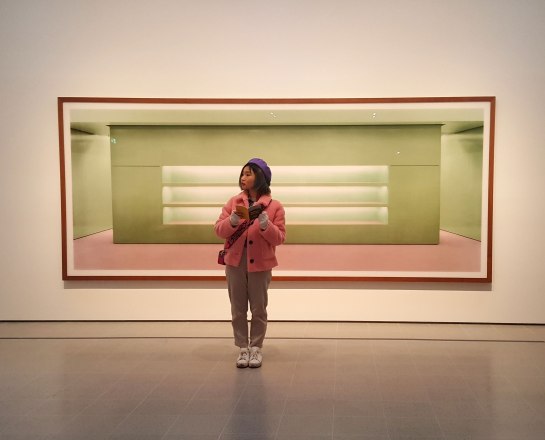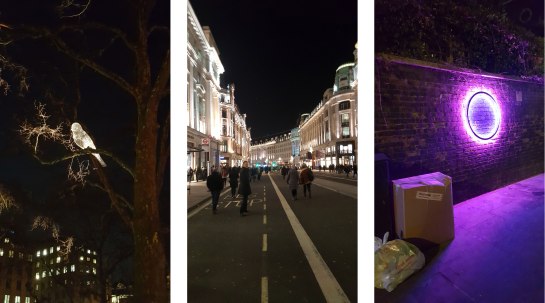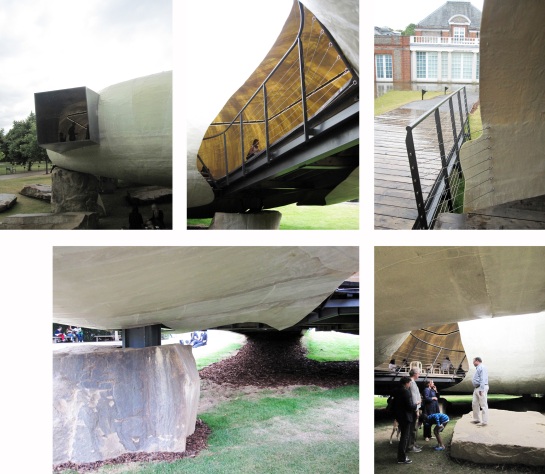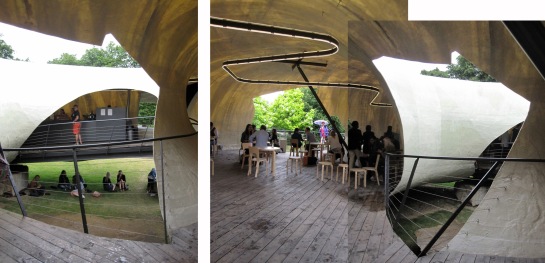
I first came across Andreas Gursky’s work when I saw two of his photographs at the Constructing Worlds exhibition at the Barbican in 2014. Before I even read the caption of “Montparnasse” (left in the image below) which explained how the picture was processed, I knew it had undergone some sort of digital manipulation. Both the human eye and the camera lens distort the image at the ends therefore the building could never be seen as perfectly square as it looks. Later on I read that one of Gursky’s firm beliefs is that: “Reality can only be shown by constructing it, montage and manipulation paradoxically bring us “closer to the truth”.

The philosophical question that inevitably comes right after is: what is truth? How do we define it and, ultimately is it really that important.
Bear with me in this seemingly unrelated mention of the Acropolis, or to be more precise the Parthenon in Athens, which has been pronounced the most perfect temple ever built since ancient times. This is mainly because of the optical corrections that the ancients invented when they realised that the eye naturally distorts what it sees, therefore no line can be seen as straight. Except if it is not straight.

In fact if the distortion is inverted, and the line is bent the opposite way of how our eyes capture it, the brain is tricked into thinking it is straight. The Parthenon looks perfect because it has no straight lines and all its components are slightly distorted. In other words perfection is achieved through deceit.

Because of my architectural training this is how I read the way that Andreas Gursky chooses to focus his interests. And it is rather obvious that I really like his pictures.
Of course their large scale which invokes a sense of awe to the viewer also plays a part. Regardless of what the curators of this exhibition say about Gursky’s work “challenging our ideas of how photography represents reality”, even if we do not choose to work our brains hard on philosophical questions, these photographs are also simply spectacular to look at.

And they do sum up in a straightforward visual manner, many issues that have to do with the environment, architecture, the concept of collective existence, art and fashion. They also deal with more politically charged issues that have to do with capitalism, mass production, pollution and deterioration of natural resources.

Finally there are images that seem more cryptic, like the ceiling of an airport or the blow-up of a grey carpet. One wonders if these photographs have been created in appreciation of geometry and texture or if they are a quasi-philosophical exploration with zen nuances.
One thing is certain: that Gursky’s pictures are very appealing because of both their scale and their themes that fluctuate between absolute simplicity and obscure abstraction.

One may choose a secondary reading into them or just enjoy their visual qualities. However architecture is very present in the majority of these photographs. Which proves the way that the man-made environment and architecture provide much more than a backdrop for life.
Through many of these pictures is clear that architecture is a product of the politics that create it and in its turn it affects deeply the people whose lives unfold within it.

Gursky has said about photography that it is not just a way to document the world, but rather a way to represent his own ideas about it. His sceptical position against impartial documentation (if there is such a thing) is proven by his very personal view of what he sees around him. A view that we are also invited to share by observing his pictures. But somehow, this very subjective view of things touches a chord in many people. It is not clear to me if this is because most people see its importance similar to what happens with classical music for example, or if it is because it speaks an easy language that is clear to most, in a way that pop culture does. Both or neither, this is an exhibition not to be missed.

The exhibition will be on until the 22nd of April 2018














